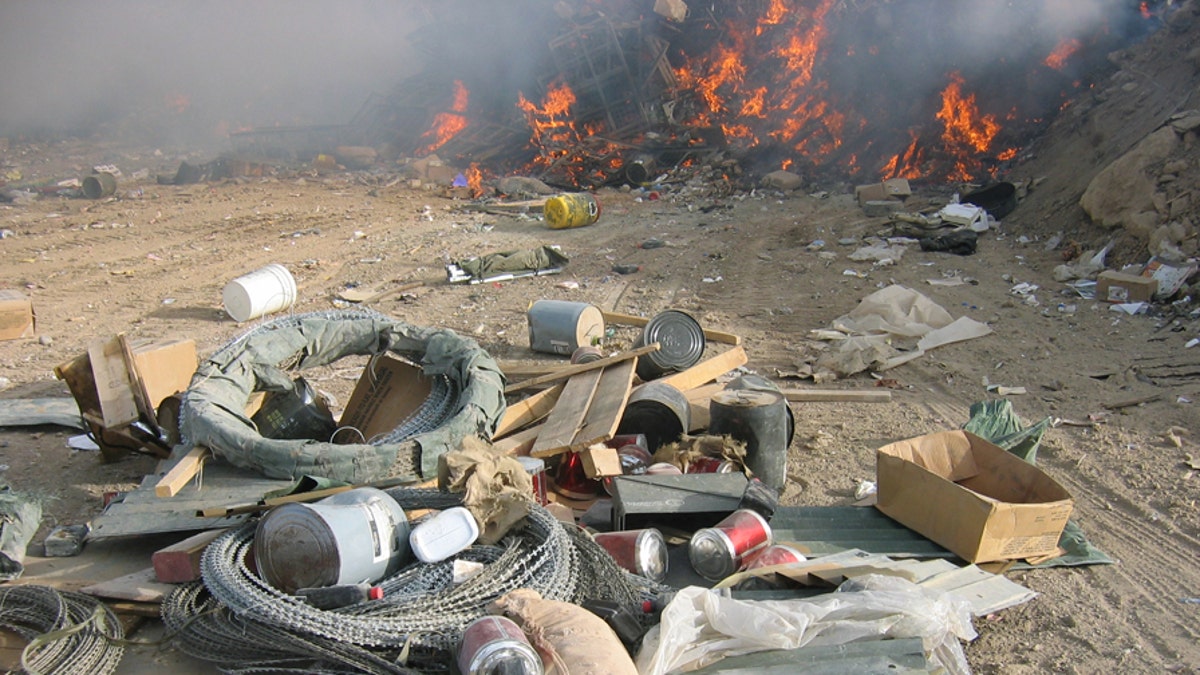What will it take for the government to fix the VA?
Former Starbucks CEO Howard Schultz calls out the failures of the VA; reaction and analysis from Pete Hegseth.
Military service members looking for compensation after their exposure to the herbicide and defoliant chemical known as Agent Orange during the Vietnam War are still fighting an uphill battle.
For over two years, tens of thousands of veterans have been waiting on a promise for the Department of Veterans Affairs to add three more health conditions to the list of diseases that are eligible for Agent Orange benefits. But now that the Trump administration officials have nixed the initiative, the promise may be left unfulfilled.
Back in October 2017, then-VA Secretary David Shulkin decided to add three health conditions – bladder cancer, Parkinson’s-like symptoms and hypothyroidism – to the list of diseases eligible to be related to Agent Orange, but White House Officials and Office of Management and Budget (OMB) Director Mick Mulvaney objected, according to documents provided to Military Times.
While many of the specifics behind the OMB’s opposition were redacted, the Times' report said the office had concerns that not only was the scientific evidence lacking, but the expansion would have a severe impact on the budget.
It’s estimated nearly 83,000 veterans are afflicted with one of the three proposed presumptive conditions. The estimated cost for providing disability compensation was also redacted, according to the report.

Then Veterans Affairs Secretary David Shulkin in August 2017. (AP)
In 2016, the National Academies of Sciences, Engineering and Medicine (formally known as the Institute of Medicine, IOM) found there was “limited or suggestive evidence” linking bladder cancer and hypothyroidism to Agent Orange exposure. That represented an upgrade from a previous recommendation that there was inadequate or insufficient evidence to link the diseases to the toxic herbicides used as defoliants in Vietnam.
The 2016 IOM report also recommended that veterans with “Parkinson’s-like symptoms” – not just those diagnosed with Parkinson’s – be granted a service-connected presumption that surmises certain disabilities were caused by military service.
The report came just five months after a provision that was a part of the Agent Orange Act of 1991, which allowed the VA secretary to dictate regulations for "a presumption of service connection" for diseases, had expired.
A presumption of service connection is when VA presumes a veteran's disease was caused by their military service, usually due to a certain exposure.
Shulkin made the three additions to the Agent Orange list with the knowledge that the provision had expired. At the time, he cited the general authority of the VA and rulings from previous VA secretaries who awarded benefits to prisoners of war for other diseases like amyotrophic lateral sclerosis, or ALS, and osteoporosis, despite the IOM’s claim that more evidence was needed or there was limited proof of any association.

US aircraft sprayed 20 million gallons of herbicides across Vietnam during the Vietnam War. Dioxin, a contaminant in Agent Orange, persists today. (US Army Flight Operations Specialist 4 John Crivello in 1969)
On Nov. 1, 2017, Shulkin issued a press release in which he stated that he had “made a decision” on the new presumptive conditions and would conduct a regulatory review.
But that very same day, Shulkin met with Mulvaney and a veteran’s adviser for Trump’s domestic policy council, who questioned his decision since the 1991 act had expired.
Shulkin was eventually ousted in March 2018 and with it, the initiative has sat in limbo ever since.
According to Military Times, a briefing delivered in May 2018 to the new acting secretary, Robert Wilkie, stated that the department is waiting for the results of two studies – the VHA’s Vietnam Veteran Morbidity Study and the Vietnam Mortality Study – before “re-engaging OMB on prescribing presumptions.”
The results of those studies were never released. And according to a statement from the VA that was drafted but never released, the VA and the administration determined in “late March (2018) that there is insufficient data and information to overcome the limitations in the scientific support for the rulemaking.”
The VA’s handling of the amendment to the Agent Orange compensation list is similar to how the federal agency has been handling compensation for veterans made sick due to exposure to a different type of toxin — toxins that emanated from burn pits.
During the wars in both Iraq and Afghanistan, the burn pit method was adopted originally as a temporary measure to get rid of waste and garbage generated on bases. Everything was incinerated in the pits, including plastics, batteries, appliances, medicine, dead animals and even human waste. The items were often set ablaze with jet fuel as the accelerant.

Burn pits, like this one at FOB Marez, were originally considered a temporary measure to get rid of huge amounts of waste generated at bases. The array of material sent to the pits is said to have included plastics, batteries, metals, appliances, medicine, dead animals and even human waste. (Courtesy of John Nelson)
The pits burned more than 1,000 different chemical compounds day and night, and most service members breathed in toxic fumes with no protection.
A registry was created by the Veterans Administration in 2011, but signing it does not guarantee any form of assistance. Service members and their families concerned with the effects of burn-pit exposure say that they struggle to keep up with the high cost of medical treatments. There are more than 180,000 names signed to the VA registry, but it is estimated that 3.5 million veterans have been exposed to burn pits.
The Investigative Unit at Fox News has reported extensively on the issues surrounding veterans made sick from their exposure to burn pits, and the lack of assistance once they fell ill.
Since 2016, our reporting has led to scores of interviews with veterans and their families, as well as those who warned military officials during the wars in Iraq and Afghanistan about the dangers of burn pits at bases like the Operating Base Marez in Mosul, Iraq. They also included inspectors who answered directly to the Pentagon and urged them to stop using the flawed method for trash disposal.
Fox News' Investigative Unit also interviewed General David Petraeus, who was in charge of the U.S. military campaign during the time the burn pits were being used.
This past winter, the Investigative Unit also reported the Department of Defense provided a full list of military installations that have water near or around them that contain harmful levels of per- and polyfluoroalkyl substances or PFAS.
Dubbed “forever chemicals,” these man-made substances do not break down, like plastic. They accumulate over time in the environment and some can linger in the human body for years.
In June 2018, the Agency for Toxic Substances and Disease Registry (ATSDR) released a report the White House deemed a “public relations nightmare.” That report linked PFAS to various cancers, thyroid defects and pregnancy complications at levels lower than the EPA’s drinking water health advisory.
An internal White House email is quoted as saying, “The public, media, and Congressional reaction to these numbers is going to be huge. The impact to EPA and [the Defense Department] is going to be extremely painful. We (DoD and EPA) cannot seem to get ATSDR to realize the potential public relations nightmare this is going to be.”
Fox News’ Georeen Tanner contributed reporting to this story.


